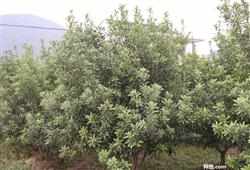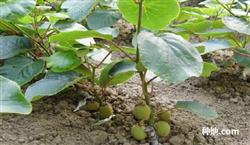How to cultivate big tree red bayberry

How to cultivate a big tree red bayberry? Please guide and introduce the big tree red bayberry is one of the special fruits in China. The yield of red bayberry is high, with a yield of 500 Mu and 1000 kg per mu, and the highest yield per plant can reach more than 200 kg. The maturing period of red bayberry is from mid-late May to early June, which is 20-30 days earlier than that of Zhejiang. At this time, it is the off-season of the fruit, the fruit has bright color, many juices, high nutritional value, sweet and sour palatability, and has the functions of relieving cough, relieving vomiting, diuresis, treating dysentery and so on. In addition to raw food, bayberry fruit can be impregnated with sugar or liquor for medicinal purposes, and can also be processed into candied fruit, canned fruit, fruit juice, jam, dried fruit, fruit wine and so on. Leaves can extract essence, and the epidermis of roots and branches are rich in tannins, which can be used to make fishnet dyes and other coatings. The oil content of nucleolus is as high as 4%, which can extract oil. The bayberry tree is strong and resistant to cold and drought. Its roots have actinomycetes symbiosis, can grow in the ridge and thin mountains, branches and leaves luxuriant, evergreen all the year round, can play the role of soil and water conservation, reduce soil erosion, but also a good tree species for afforestation and beautification of the environment. 1. Requirements for environmental conditions 1. Climate: Waxberry is a cold-tolerant evergreen fruit tree, which is suitable for growing at an annual average temperature of 15 ℃ and an absolute minimum temperature of not less than-12 ℃. High temperature is disadvantageous to the growth of red bayberry, especially avoid the hot sun. Red bayberry Yin tolerance, Rain Water sufficient, humid climate, long life and high yield, fruit juicy and sweet, near the lake, between mountains and valleys, by large water body to adjust temperature and humidity, the most conducive to the growth of red bayberry. Red bayberry has shallow roots and luxuriant branches and leaves, so it is afraid of the wind, so it is appropriate to choose a shelter when building the garden. Red bayberry is not strict with light, and it is also suitable in more secluded valleys. 2. The soil and slope direction of red bayberry is suitable for sandy red soil or yellow soil with soft, good drainage and gravel. The acidic soil with a PH value of 4Mel 5 is suitable for cultivation of red bayberry where wolf fern, Azalea, myrtle, pine, fir and other places grow well. Because of the symbiosis of red bayberry and mycorrhiza, the growth results in slopes with thin ridges and good drainage are better than those in flat and fertile land. Growing in Pingtenwo causes the tree to grow too much, and it is easy to drop flowers and fruits. The slope direction is closely related to the quality of red bayberry. Red bayberry on the slope of Yinshan Mountain is soft and juicy with good flavor. Therefore, planting on the north slope is often selected, especially in areas vulnerable to drought in summer, because the north slope maintains more water, which can reduce the harm of drought, but in deep mountains and valleys, because of the high mountain phase, there is more water in the soil, and each slope can be planted. The slope has little effect on the growth of red bayberry. 2. Key points of cultivation techniques (1) Garden site selection and planning: 1. Garden site selection and planning: choose a place with an elevation of 1600 Mustang 2000 meters above sea level, which is suitable for planting on gravel soil. 2. Variety selection: Dongkui is the main choice for places below 1670 meters above sea level, and a shepherd's shepherd seed is chosen for places above 1670 meters above sea level. Generally, among the 1000 female plants planted in 500Mel, one male plant is mated. (2) Seedling planting 1, planting density: the soil layer is deep, the fertility condition is high, the garden land with low altitude can be sparse, on the contrary, it can be denser, the row spacing is 5 × 5 meters or 5 × 4 meters, and there are 27 trees per mu. 2. Shutang: the mountain is fixed along the contour line. The diameter of the digging pond is 0.8 Mill 1 meter, and the depth is 0.7 Mal 0.8 meter. When excavating, the topsoil should be placed on one side and the subsoil on the other. When returning to the pond, use mature farm manure 20ml 30kg or soil fertilizer 35ml 40kg, superphosphate 1kg, mix well with the fertile soil and return to the bottom soil, and then return to the bottom soil. 3. The planting time is from mid-late December to mid-late January. 4, planting steps: before planting with rooting powder treatment, the method is as follows: ABT2, No. 3 (water-soluble) rooting powder mixed well with water 50 kg, that is, mixed into a solution of 20PPM concentration, 1000 seedlings were soaked in the solution for half an hour, then the remaining medicine solution was dipped in the mud and planted (note: pond porcelain, plastic, pottery and wooden utensils should be used). When planting, put the root of the seedling into the hole where the base fertilizer has been applied, correct the distance, align straight and horizontal, put the grafting joint in the windward direction, put the seedling straight, stretch the root around, and then cultivate the soil, pay attention to the close connection between the root neck of the seedling and the root system. The soil must be buried about 10 centimeters above the interface of the wedding, then pour enough water and cover it with plastic film. (3) Management 1. In that year, it can only be watered, not fertilized, otherwise it will cause root rot. 2. Fixed pillars: after planting, fixed pillars should be placed to prevent the tree from shaking, which is conducive to survival and growth; 3, in the year of planting, the root growth is very weak, the soil should be loosened, shaded and irrigated in the high temperature season, the thin film should be released in early summer, and grass should be covered with grass in early summer. prevent water evaporation, cool down, promote survival, cover grass should be at a certain distance from the trunk, so as not to cause insects to harm the tree. 4. Other management (1) intercropping: Myrica rubra can make full use of the surrounding land and plant dwarf crops in the first few years after planting, but the cultivated crops should not be too close to the roots, otherwise the growth of bayberry will be affected. (2) fertilization: young trees should not be fertilized in the year of planting, 25 grams of urea were applied in the spring of the second year, 0.5 kg of compound fertilizer or 30 kg of human and animal urine manure were applied from May to June. In the third year, 0.2 kg of urea was applied from May to June, 10 kg of plant ash or 1 kg of potassium sulfate was applied from September to October, 10 kg of plant ash or 1 kg of potassium sulfate was applied from September to October, and 30 kg of human and animal urine and feces were applied. Results before the sprouting of leaf buds in spring, urea 0.3 per plant was applied, and when the basal fertilizer was sufficient, it could not be applied. From June to July, each plant was applied 0.3 rain 0.5 urea, about 2 kilograms of potassium sulfate, or 15 kilograms of plant ash. From September to October, combined with deep ploughing and soil improvement, barnyard manure 2530 kilograms, or compost 4045 kilograms or dozens of kilograms of fertile soil. (3) soil management of Myrica rubra soil management combined with ploughing and weeding for 3 times a year, and three years later, base fertilizer was applied to deeply turn ponds and improve soil. 5. Shaping and pruning the general tree shape of Myrica rubra with three main branches as the main shape, that is, the trunk height is about 30 inches, the first layer of the base is selected with three main branches in different directions, the distance between the two layers is about 10 cents, the distance between the second layer is about 110 feet, the angle between the main branch and the main rod is about 50 degrees, and the central trunk curve rises, highlighting the three main branches of the base as the key point to help its balanced growth. The wide branches between the first layer and the second layer can be retained as far as possible, and ring cutting and other measures can be taken to form buds as soon as possible. 6. pest control: at present, the occurrence of diseases and insect pests of big trees in our region is very light, and almost no pesticide control is carried out, mainly to prevent the harm of diseases and pests such as bayberry root rot and yellow ants. (1) Root rot: generally, the land with poor soil drainage is easy to get sick. After the disease, the aboveground leaves turn yellow, dry and fall off at the initial stage, and the roots rot and mildew in the later stage. Prevention and control pay attention to drainage, once found, immediately dig the soil, so that the rhizome exposed, let the sun exposure, can also be used 600 times carbendazim solution or 0.5 degree stone sulfur mixture to irrigate the roots; (2) Yellow ants and other underground pests mainly damage the root and neck, the control can be spread around the tree plate with carbofuran or methamphetamine. (3) Brown spot disease can be controlled by spraying 800-fold carbendazim or 100-fold methyl topiramate at the initial stage of the disease, and (4) whitefly: spraying 100-fold liquid pyrethrum pesticides and biological agents in the larval stage. Click to get more bayberry planting techniques click to get more fruit planting techniques
- Prev

How to manage bayberry after picking?
How to manage bayberry after picking? Please introduce that the nutritional status of bayberry has a direct impact on its yield, quality and tree potential. After this year's bayberry harvest, in order to obtain a high yield and bumper harvest of red bayberry in the coming year, overcome the phenomenon of fruit in the next year, and make the bayberry tree have good autumn shoots, the following four management measures should be taken after fruit harvest: first, science.
- Next

How should kiwifruit seedlings be raised?
How should kiwifruit seedlings be raised? Please introduce kiwifruit seedlings: seed collection, select the fully ripe fruit of the strong mother tree, separate the seed and pulp after softening, wash and dry and set aside. Soak the shade-dried seeds in 45 ℃ warm water for one day and night 40 days before sowing. Pad the bottom of the flowerpot with wet sand.
Related
- Moge, come on! The staff of the peasant association in the producing area of cantaloupe were frightened when the crowd gathered.
- Causes and Solutions of low Fruit setting rate of Apple
- Symptoms and control measures of passion fruit virus disease
- Fruit growing lesson: how do apple orchards keep high yields?
- Can you build orchards in the mountains? What are the pros and cons?
- How to manage the coloring period of Crisson grape?
- This paper introduces the processing technology of two kinds of fig products.
- How much is a month for retired teachers in rural areas by 2020?
- How can strawberry planting increase sugar content? We should pay attention to management in many aspects.
- What are the cultivation techniques on how to improve the yield of golden fruit?

